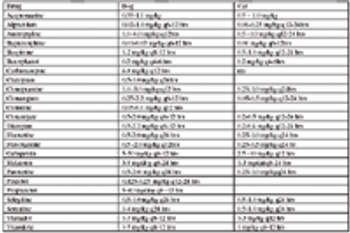
Concrete steps you can take in reaching a decision.
Texas Veterinary Behavior Services
2627 Cordes Drive
Sugar Land, TX 77479

Concrete steps you can take in reaching a decision.

A look at the positive and negative indicators for anxiety and aggression treatment outcome.

Our knowledge of the brain on the neurochemical, genetic and molecular level is increasing steadily each year. Despite this, little is definitively known about the neurochemical correlates of various disease processes. Much of our knowledge concerning the etiology of mental illness comes from response to pharmacological intervention.

Frustrated by that cat with chronic progressive renal disease that won't eat anything but its old diet? What about the cat that exhibits enduring anorexia after being ill even though you can't find any persisting medical reason? While there often are no simple answers for fixing these cases, there are simple ways to prevent your new kitten patients from developing into a future finicky eater.

Feline housesoiling still represents the most common reason cat owners seek behavioral advice from their veterinarian. Inappropriate elimination can be seen in all ages and breeds of cats and often can be frustrating to resolve. The causes are multiple and sometimes complex.

In some situations, practitioners are left trying to determine whether an animal's behavioral change reflects a medical issue or a behavioral problem. This distinction is fuzzy and frequently artificial. An individual's genetics, behavior and physiology are so intimately entwined with each other as to make them inseparable as discreet components.

For decades, dog behavior has been interpreted using a linear dominance hierarchy extrapolated from a wolf-pack model. This has led to the pervasive use of dominance constructs to incorrectly explain a variety of dog behavior problems. In particular, aggressive behavior has been erroneously equated with dominance.

Behavior problems are frustrating, emotionally taxing, and often dangerous to the animal or those around the animal. They can also pose a huge financial burden in terms of potential liability and resources for attempted resolution of the problem(s).

Behavior questions and concerns are pervasive among veterinary clientele. Clients should always be offered the option of seeing a veterinary behaviorist; however, in many cases a veterinary behaviorist may not be locally available; the client may refuse such a referral; or the pet's problem may be amenable to simple alterations in the client's training process (or lack thereof!).

Environmental enrichment is an important and essential aspect of most animal management programs.

Clicker training currently is a popular training method amongst dog owners, and increasingly among cat trainers and horse trainers.

Effective restraint is one of those aspects of veterinary medicine that we simultaneously take for granted but also wish we could do better.

Dog aggression is a serious public health issue in the U.S.

Behavioral issues are the most common complaint among pet owners.

Behavior problems associated with fear and aggression are the most common issues presenting to behaviorists, particularly in dogs.

Behavior problems are frustrating, emotionally taxing, and often dangerous to the animal or those around the animal.

In this video, Dr. Haug explains how to manage cats' destructive behaviors with stimulation.

Dr. Haug shares tips on managing pet birds that bite.

In some situations, practitioners are left trying to determine whether an animal's behavioral change reflects a medical issue or a behavioral problem.

Aggression is the most common reason that dogs are seen at behavior referral practices.

Environmental enrichment is an important and essential aspect of most animal management programs.

Feline housesoiling still represents the most common reason cat owners seek behavioral advice from their veterinarian.

Behavior problems are frustrating, emotionally taxing, and often dangerous to the animal or those around the animal.

Effective restraint is one of those aspects of veterinary medicine that we simultaneously take for granted but also wish we could do better.

Published: November 1st 2011 | Updated:

Published: November 1st 2011 | Updated:

Published: August 1st 2009 | Updated:

Published: August 1st 2009 | Updated:

Published: August 1st 2009 | Updated:

Published: August 1st 2009 | Updated: